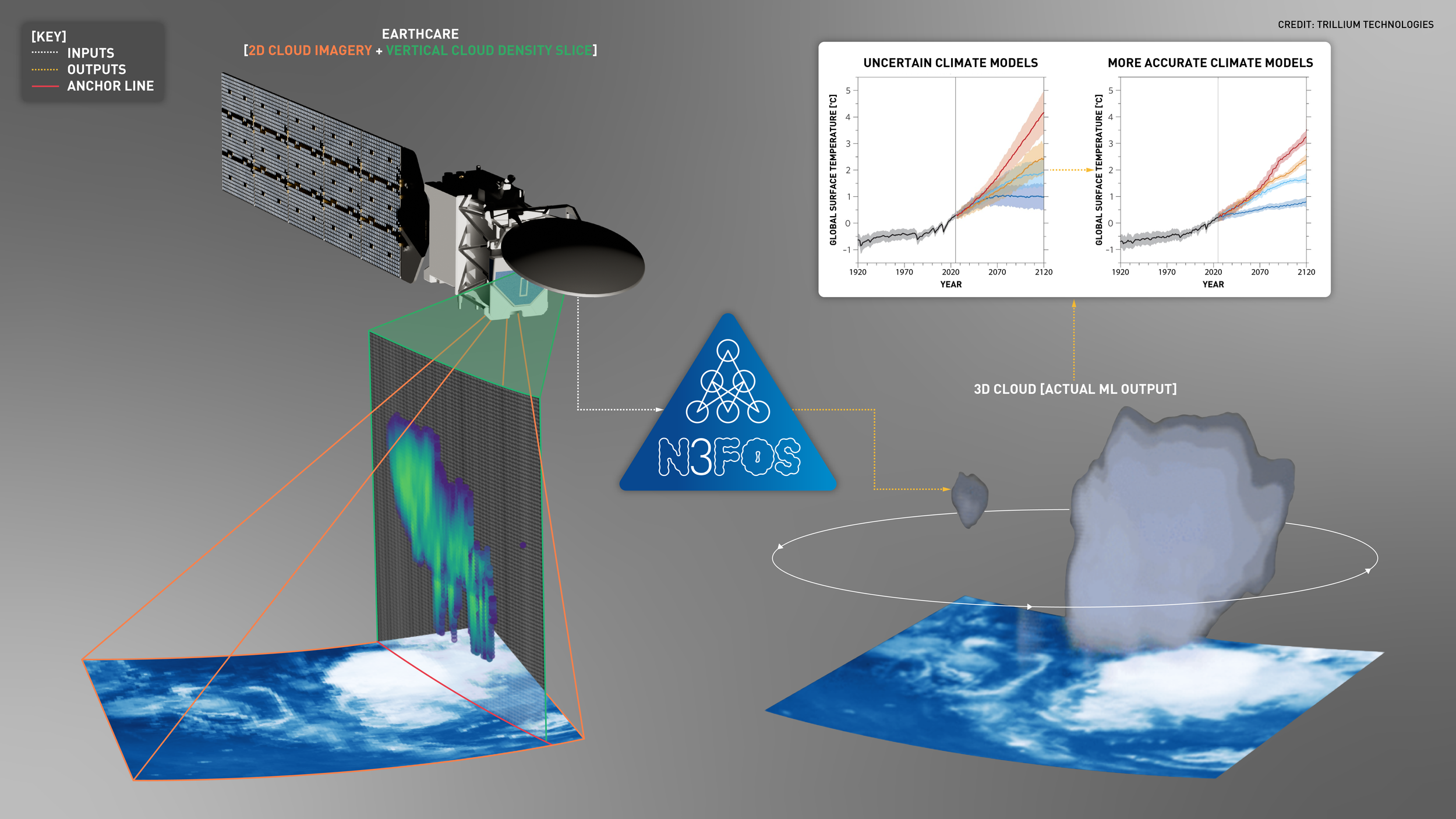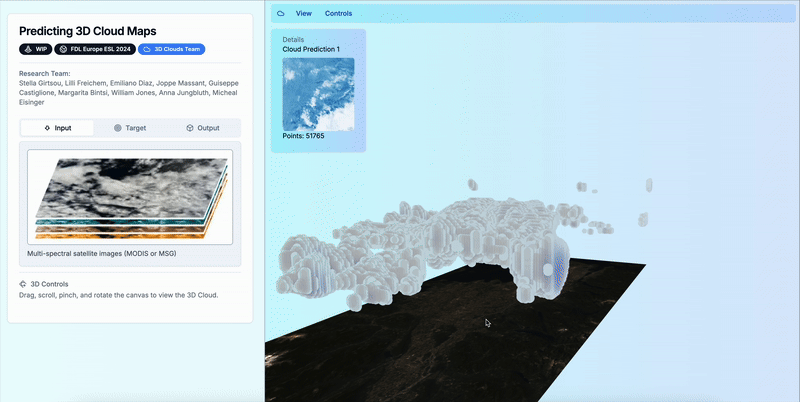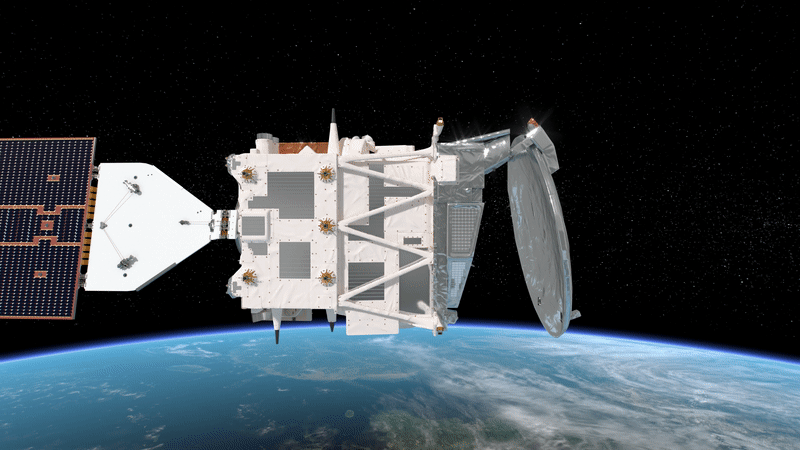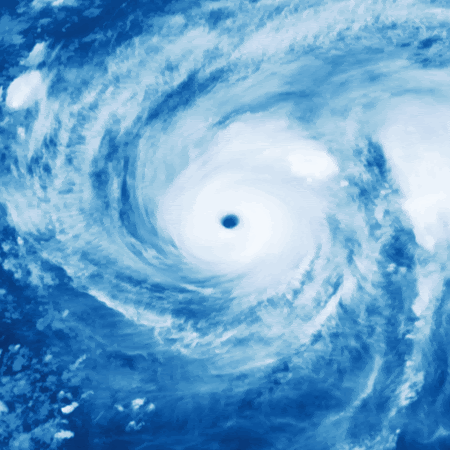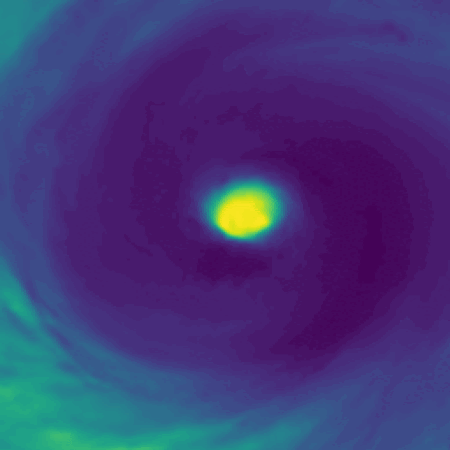Are 3D clouds the key to climate breakthroughs?
A new three-dimensional perspective on our atmosphere for a better understanding of clouds and climate.
Written by Lilli Freischem, Oxford and FDL Earth Systems Lab researcher (eslab.ai).
If you've ever looked up and wondered what clouds are really doing up there, beyond just threatening your picnic, you're not alone. Clouds are one of the biggest mysteries in climate science. They can cool the Earth by reflecting sunlight or warm it by trapping heat, and knowing which effect dominates, where, and when is still a major challenge for scientists. Satellite imagery and atmospheric data can be used to study this problem, but do not fully observe cloud types, altitude and thickness at large scales, which makes it tough to model clouds globally. What we need are accurate observations of the global 3D distribution of clouds.
As part of FDL’s Earth Systems Lab (ESL) we have been taking on the challenge of reconstructing 3D cloud fields using deep learning and diverse space-borne observations. By combining high-resolution satellite imagery, which provides a global, top-down view of our atmosphere, with vertical cloud profiles, we aimed to create accurate 3D representations of clouds across the globe.
You can explore the AI model here:
We used cutting-edge AI methods, including geospatially-aware masked autoencoders which were pretrained in a self-supervised fashion to maximise the information we can learn from the vast amounts of satellite images that are taken of our planet every day. During pretraining, the models learned to understand the complex spatial and temporal patterns within multi-spectral satellite images. We then finetuned them using limited but extremely valuable vertical measurements from the CloudSat satellite, which enabled our model to predict vertical cloud structure even in areas without direct observations. The results are promising – our models outperformed previous attempts at tackling this challenge, especially in dynamic regions like the intertropical convergence zone, where cloud behaviour is particularly difficult to predict.
We thank the ESA Φ-lab for this strong collaboration and their technical expertise which enabled our project to succeed – and our efforts could not be better timed. ESA’s new EarthCARE satellite, launched in May 2024, is just beginning to deliver the most advanced vertical cloud and aerosol measurements to date. As this new cutting-edge data becomes available, we plan to use transfer learning to enable our models to make even better predictions.
This research was accepted into the Machine Learning and the Physical Sciences Workshop and NeurIPS 2024. You can read the full publication here.
At the EGU Conference in Vienna in May, FDL.ai / Trillium and Oxford researcher Lilli Freischem shared the 3D Clouds findings and ongoing work with the wider scientific community. Read the abstract here.
Looking ahead we are exploring how our 3D cloud reconstructions can improve the prediction of extreme weather events. Stay tuned – we're just getting started!
Join us on August 8th to see the latest progress in 3D clouds for extreme weather, as well as advances in geospatial foundation model uncertainty and detecting greenhouse emissions from space: https://eslab.ai/live
Read more about our vision of creating a planetary nervous system here.
FDL Earth Systems Lab is committed to better understanding our changing climate and using AI to become better stewards of our planet. If you would like to get involved, please get in touch here: team@trillium.tech.

